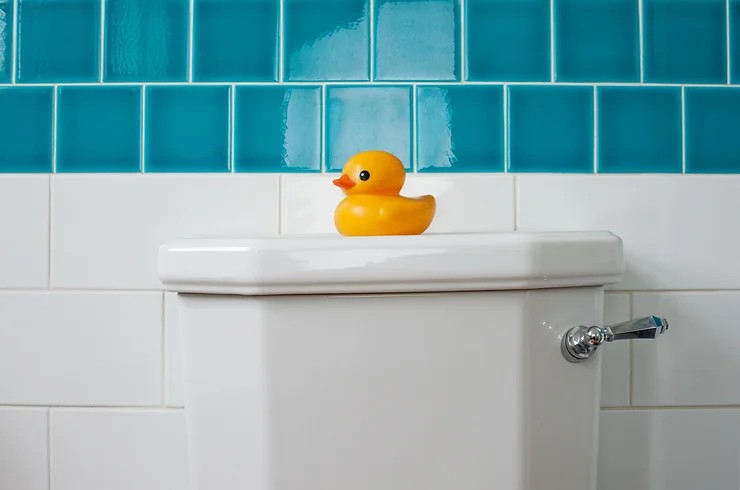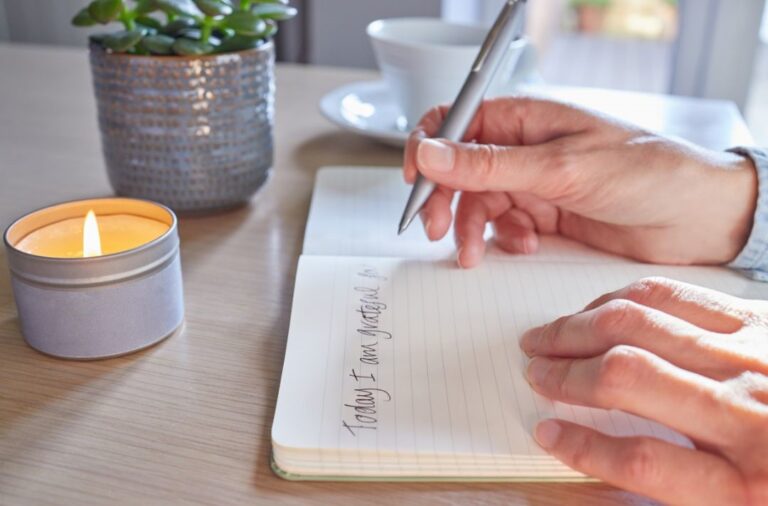Ultimate Toy Guide: 30 Best Sensory Toys for Autistic Children

This post may contain affiliate links and I could earn a small commission at no cost to you. However, I will never recommend anything that I do not believe in or use myself. You can read more about my disclosure policy here.
As a parent of a young autistic child, I know firsthand that discovering the most effective tools to nurture their growth and development is both gratifying and demanding. One tool that has garnered considerable recognition is sensory toys.
These remarkable playthings are thoughtfully crafted to captivate and arouse a child’s senses, all while offering a secure and delightful playtime encounter.
Whether you’re a parent or caregiver seeking the perfect toys for your child or searching for a thoughtful gift idea for an autistic loved one, continue reading for a comprehensive list of the 30 best sensory toys for autistic children.
Be sure to explore this fantastic list of Sensory Stocking Stuffers for even more gift ideas your loved ones will enjoy!
Understanding Autism and Sensory Sensitivities
Autism Spectrum Disorder (ASD) is a developmental disorder that affects how a person perceives and interacts with the world around them. Many children with autism have sensory processing disorder or unique sensory sensitivities, which can include hypersensitivity (heightened response) or hyposensitivity (diminished response) to various sensory inputs like sight, sound, touch, taste, and smell. These sensitivities can affect a child’s daily life and their ability to engage with their environment.
Related: Common Warning Signs Of Sensory Processing Disorder In Kids
Benefits of Sensory Toys
Sensory Stimulation
Sensory toys are an invaluable resource for providing controlled sensory stimulation. These toys come in various textures, colors, and shapes, allowing children to engage with different sensory inputs at their own pace. For a child with hypersensitivity, these toys can be a gentle introduction to sensations they might find overwhelming. Conversely, for a child with hyposensitivity, sensory toys can provide the sensory input they crave, aiding in sensory integration and overall comfort.
Calming and Self-Regulation
Many sensory toys are designed to provide soothing and calming sensations. The repetitive, rhythmic movements or textures of certain toys can help children self-regulate their emotions and reduce anxiety. This aspect is particularly important for autistic children who often struggle with emotional regulation. Sensory toys can serve as a tool for them to regain a sense of control and comfort when they’re feeling overwhelmed.
Enhancing Focus and Attention
Some sensory toys are designed to capture a child’s attention effectively. These toys often involve mesmerizing movements, vibrant colors, or intriguing textures. By providing a focal point, these toys can assist children in enhancing their focus and attention span, which can be challenging for some autistic children. This heightened concentration can translate to better learning and engagement in various activities.
Related: 20 Of The Best Classroom Sensory Tools And Quiet Fidget Toys
Promoting Fine and Gross Motor Skills
Sensory toys often require different types of physical interaction, such as squeezing, pinching, or manipulating objects. These actions promote the development of fine and gross motor skills, which are crucial for daily living activities. For autistic children who may struggle with motor skills, these toys offer a fun and motivating way to enhance their physical abilities.
Social Interaction
Some sensory toys are designed to be enjoyed with others, making them an excellent resource for fostering social interaction and play skills. Sharing a sensory experience through play can help children with autism build social connections, develop communication skills, and understand the concept of turn-taking, all of which are vital for their social development.
Related: Why Sensory Play Is Important For Child Development
Different Types of Sensory Toys
Fidget Toys
Fidget toys are small, portable items that are perfect for children who benefit from tactile stimulation. These toys come in a wide range of shapes and textures, including squishy stress balls, textured rings, and fidget spinners. Fidget toys offer a simple yet effective way for children to manage sensory input, reduce anxiety, and improve focus. They can discreetly engage with these toys in various settings, such as in the classroom or during therapy sessions, without causing disruption.
Visual Stimulation
Toys designed to provide visual sensory input can be captivating for autistic children. This category includes items like light-up toys, lava lamps, and spinning mobiles. Visual stimulation toys can be particularly beneficial for children who enjoy or benefit from focusing on moving lights and colors. These toys can help children learn to track objects visually and promote eye-hand coordination.
Auditory Stimulation
For children who are sensory seekers in the auditory domain, toys that produce sound can be highly engaging. Musical instruments, sound-producing toys, or toys that play soothing sounds fall into this category. These toys not only stimulate auditory senses but can also encourage auditory processing and expression. Autistic children may find comfort in the predictability of sounds produced by these toys, helping them regulate their sensory experiences.
Tactile Toys
Tactile sensory toys are designed to provide a variety of textures and surfaces for children to explore. Examples include textured balls, sensory putty, or toys with varying surface materials. These toys can help children with tactile sensitivities gradually desensitize or become more accustomed to different textures, ultimately increasing their comfort with various tactile experiences.
Deep Pressure Input
Weighted items like blankets and vests provide deep pressure input, which can be profoundly calming for many autistic children. The gentle, even pressure from these items can help reduce anxiety, improve focus, and promote a sense of security and comfort. They are often used during rest or relaxation times to provide a soothing sensory experience.
Proprioceptive Input
Proprioceptive toys cater to autistic children’s body awareness and balance. These items, including therapy putty for fine motor skills, weighted vests for self-regulation, and resistance bands for muscle development, offer a comprehensive sensory experience that enhances their overall development. Toys that offer proprioceptive input can have a profound impact on their overall sensory integration.
Vestibular Input
Vestibular toys focus on balance and spatial awareness in autistic children. Swings for rhythmic motion, spinning chairs for controlled stimulation, and balance boards for improved coordination make up this category. By promoting better balance and spatial orientation, these toys aid in holistic sensory integration and development.
Choosing the Right Sensory Toys
Selecting the appropriate sensory toys for your young autistic children is a crucial step in ensuring their developmental and sensory needs are met effectively. To do so, it’s essential to take several factors into account.
Firstly, keenly observe your child’s responses to different sensory inputs to identify their unique sensitivities and preferences. Seeking guidance from occupational therapists or autism specialists can be immensely helpful, as they can offer personalized recommendations based on your child’s specific needs.
Prioritize safety by ensuring the selected toys are age-appropriate and pose no hazards.
Furthermore, consider rotating the available sensory toys regularly to maintain your child’s engagement and interest.
Remember that the journey of finding the right sensory toys for autistic children might require some experimentation, but with patience and attentiveness, you can create a tailored and enriching sensory play experience that supports your child’s development and well-being.
Related: 10 Of The Best Children’s Books About Autism
30 Best Sensory Toys for Autistic Children
1. Stepping Stones
Stepping Stones are versatile sensory toys that enhance balance, coordination, and motor skills for autistic children through tactile and proprioceptive input. They also promote creative play, while fostering a calming and engaging sensory environment.
2. Balance Board
A Balance board provides proprioceptive and vestibular sensory input, aiding in the development of balance and coordination skills for autistic children. This toy can contribute to improved body awareness and concentration.
3. Sensory Swivel Chair
A Sensory Swivel Chair provides vestibular sensory input, promoting a sense of balance and coordination. It offers a fun and engaging way for autistic children to engage with their senses while also encouraging motor skills development.
4. Balance Beam
The Balance Beam also offers proprioceptive and vestibular sensory input, helping in the development of balance and coordination skills for autistic children. It, too, can contribute to improved body awareness and concentration.
5. Trampolines
Trampolines offer a dynamic sensory experience by engaging the vestibular system. Jumping on a trampoline provides proprioceptive input and helps with sensory regulation, making it an effective tool for managing sensory sensitivities in autistic children.
6. Crash Pad
A Crash pad is a safe and inviting space for children to jump onto, offering proprioceptive and tactile sensory input. It’s an excellent tool for sensory regulation and can be used to redirect energy and provide a controlled sensory outlet.
7. Balance Pods
Balance Pods are fantastic sensory toys for autistic children because they encourage balance, coordination, and body awareness. Their unique textured surface provides tactile input, promoting sensory exploration and enhancing motor skills development.
8. Kinetic Sand
Kinetic Sand are excellent sensory toys for autistic children due to its pliable texture, providing both tactile and proprioceptive input. It allows them to engage in imaginative play while enhancing fine motor skills and promoting a calming effect.
Related: How to Create an Awesome Ocean Themed Sensory Bin
9. Bilibo
The Bilibo, with its simple, open-ended design, stimulates imaginative play and sensory exploration. Autistic children can use it in a multitude of ways, providing tactile, proprioceptive, and visual sensory input while promoting creativity and cognitive development.
10. Sensory Bins
Sensory Bins are highly effective sensory toys for autistic children, providing opportunities for tactile exploration, incorporating various textures and materials, fostering fine motor skills, and promoting sensory integration. These bins can be customized to cater to a child’s specific sensory needs, making them an adaptable tool for sensory therapy.
Related: Sensory Bin Supplies: What You Need To Have
11. Lava Lamp
A Lava Lamp is a wonderful sensory addition for autistic children, as it provides mesmerizing visual stimulation with its gentle, flowing lava. This calming visual can help with relaxation and focus, making it a valuable tool for sensory soothing.
12. Snuggle Pod Canoe
The Snuggle Pod Canoe offers a cozy, enclosed space that provides deep pressure sensory input, helping to create a calming effect for autistic children. It serves as a comfortable and secure spot for relaxation or sensory regulation.
13. Pea Pod Swing
A Pea Pod swing is an excellent sensory tool that offers vestibular and proprioceptive input. Swinging can help with sensory integration, body awareness, and coordination, providing a soothing and enjoyable experience for autistic children.
14. Bouncy Horse
A Bouncy Horse is a fun and engaging way for autistic children to receive proprioceptive input while promoting motor skills development. It encourages active play and balance, which can be beneficial for sensory regulation and physical development.
15. Hopper Ball
The Hopper Ball is a versatile sensory tool that combines proprioceptive and vestibular input. Bouncing on a hopper ball promotes gross motor skills and can help with sensory self-regulation by providing an outlet for excess energy. It’s a fun and effective sensory toy for autistic children.
16. Weighted Blanket
A weighted blanket is a fantastic sensory tool for autistic children as it provides deep touch pressure, which can have a calming and soothing effect. This sensory input can help reduce anxiety and promote better sleep, making it an invaluable addition to sensory routines.
17. Weighted Lap Pad
A weighted lap pad offers the same deep pressure sensory input but in a more localized manner. It can be used in various settings, such as school or car rides, to help autistic children stay focused and regulated.
18. Body Sock
A Body sock is a unique sensory tool that provides deep pressure input and tactile stimulation by enveloping the child’s body. It encourages body awareness and can have a calming effect on autistic children by providing a sense of containment and security.
19. Pop Tubes
Pop Tubes are versatile tools that cater to both tactile and auditory sensory needs. The tubes’ textures and sounds engage multiple senses, encouraging exploration and sensory awareness in autistic children. They can be a calming and focusing tool, helping with self-regulation.
20. Sensory Tubes
Sensory tubes are excellent sensory tools for autistic children, offering captivating visual input that promotes focus and relaxation. The gentle swirling motion of the glitter can help reduce anxiety and improve concentration, making them a beneficial addition to sensory routines.
21. Fidget Spinners
Fidget Spinners serve as a portable sensory tool that offers tactile and visual stimulation. They are excellent for redirecting excess energy and improving concentration by providing a repetitive, soothing motion for autistic children.
22. Liquid Motion Bubbler
The Liquid Motion Bubbler is a captivating visual sensory toy that can have a calming effect on autistic children. Watching the mesmerizing liquid movement can help reduce anxiety and promote relaxation. It encourages visual tracking and focus, making it a valuable tool for sensory therapy.
23. Texture Putty
Texture putty is a versatile sensory tool that offers a wide range of tactile sensations, helping autistic children explore and become more comfortable with various textures. It encourages sensory exploration, fine motor development, and serves as a portable tool for self-regulation.
24. Foam Pogo Stick
Foam pogo sticks offer a safe and enjoyable way for autistic children to engage in proprioceptive sensory input. Jumping on a pogo stick promotes body awareness, core strength, and can help with self-regulation by providing an outlet for excess energy.
25. Scooter Boards
Scooter boards are versatile sensory toys that provide both proprioceptive and vestibular input. Children can use them for various activities, encouraging mobility, spatial awareness, and sensory integration.
26. Plasmacar
The Plasmacar offers a unique way for autistic children to engage in physical activity while receiving proprioceptive and vestibular input. It encourages whole-body movement and coordination, making it an enjoyable tool for sensory integration and play.
27. Roller Coaster Toy
A Roller Coaster Toy is an excellent sensory tool for autistic children as it provides a thrilling yet controlled sensory experience. The rolling motion offers vestibular input, promoting balance and spatial awareness, while the excitement and engagement it provides can help stimulate the senses and encourage social interaction.
28. LED Doodle Board
An LED Doodle board is an exceptional sensory toy for autistic children due to its captivating visual effects and interactive nature. It provides dynamic and colorful visual stimulation, promoting engagement and focus, while also offering a creative outlet for self-expression.
29. Rainmaker Shaker Toy
A Rainmaker Shaker Toy provides both auditory and tactile sensory input. As children shake the toy, they can listen to the soothing sound of falling beads, which can help reduce anxiety and encourage relaxation.
30. Musical Instruments Set
A Musical Instruments Set is a versatile sensory tool that engages auditory, tactile, and fine motor senses. Playing with musical instruments not only fosters creativity but also promotes sensory integration, coordination, and self-expression, making it an excellent choice for autistic children.
Be sure to explore this fantastic list of Sensory Stocking Stuffers for even more gift ideas your loved ones will enjoy!
Final Thoughts
Sensory toys for autistic children can be valuable tools for supporting their development and well-being. By catering to their unique sensory sensitivities and preferences, these toys can help children explore, learn, and find comfort in their world.
Remember that every child is different, so it may take some trial and error to find the sensory toys that work best for your child. With patience, observation, and the right guidance, you can create a positive and enriching sensory play experience for your child with autism.
Recommended
- Common Warning Signs Of Sensory Processing Disorder In Kids
- 20 Of The Best Classroom Sensory Tools And Quiet Fidget Toys
- Why Sensory Play Is Important For Child Development
- 10 Of The Best Children’s Books About Autism
- 10 Of The Best Books About Autism for Parents







One Comment